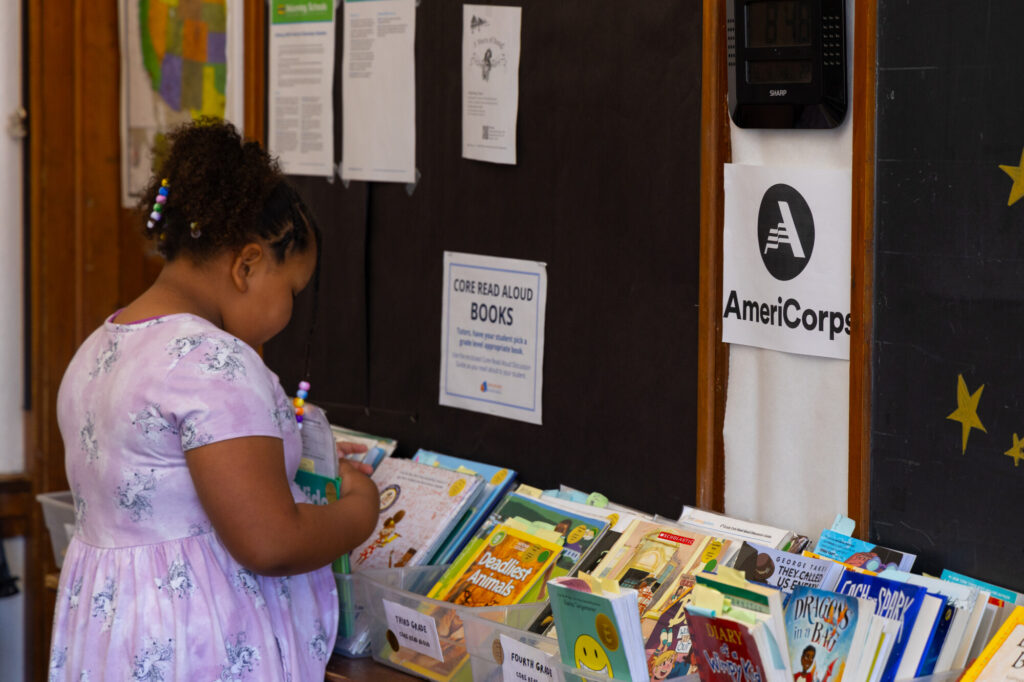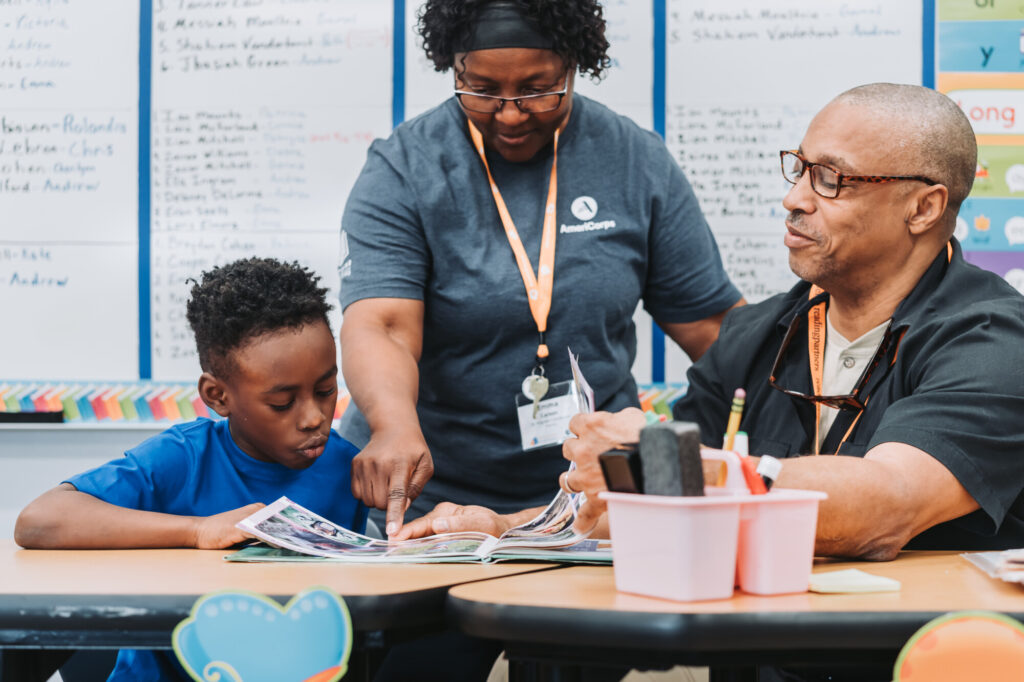Mobilizing volunteer tutors to improve student literacy: implementation, impacts, and costs of the Reading Partners program
August 19, 2015 / What Works Clearinghouse / Source
What is the study about?
This study examined whether participation in Reading Partners, a supplementary program that provides eligible elementary school students with individualized tutoring from community volunteers, had an impact on reading achievement. Students who participate in Reading Partners are in kindergarten through fifth grade, 0.5–2.5 years behind grade level in reading, conversationally fluent in English, and do not have an Individualized Education Program (IEP). The program has six core components: (1) one-on-one tutoring, which includes reading instruction, by volunteers twice a week for 45 minutes; (2) dedicated school space for the tutoring program and use of resource materials such as desks and books at different levels; (3) a curriculum that tutors use with students; (4) regularly timed assessments; (5) training for tutors; and (6) instructional supervision and support for tutors. Each program site is managed by a full-time coordinator who oversees the instruction and training of 40–100 volunteers. The primary training before volunteers work with students consists of a “shadow session,” which is a 1-hour training involving an orientation and tutoring observation led by the site coordinator. Tutoring was conducted both during school and after school.
The study included 1,265 students in grades 2–5 in 19 schools in California, New York, and Washington, DC. Study authors randomly assigned eligible students either to be invited to participate in the Reading Partners program during the 2012–13 school year or to be in a comparison group that did not participate. Students in both groups received their schools’ standard reading curriculum and other supplementary reading programs offered by the schools. To measure program impacts, study authors compared the reading achievement and school attendance of students in the two groups in spring 2013.
What did the study report?
The study authors reported that the Reading Partners program led to statistically significant improvements in reading fluency, reading comprehension, and sight word efficiency (pronouncing printed words), measured with three standardized assessments. The magnitude of the improvements ranged from 0.09 to 0.11 standard deviations. The authors found no statistically significant differences in student attendance or reading achievement scores on state standardized tests. The study authors also did not find statistically significant differences in the reading achievement outcomes among subgroups defined by prior achievement, grade level, gender, and English language learner status.
How does the WWC rate this study?
The study is a randomized controlled trial with low attrition and, therefore, is rated meets WWC group design standards without reservations. Additional information is needed to determine the WWC ratings for analyses of impacts for subgroups. A forthcoming review will report more fully on the study’s results.
Citation
Jacob, R. T., Armstrong, C., & Willard, J. A. (2015). Mobilizing volunteer tutors to improve student literacy: Implementation, impacts, and costs of the Reading Partners program. New York: MDRC.
The WWC conducts quick reviews of studies that have received significant media attention. This study was mentioned in Education Week, San Francisco Gate, The Washington Post, New America Ed Central, and Tulsa World.




